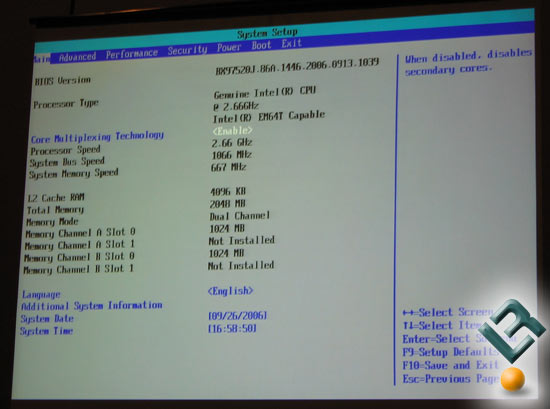

- Intel desktop board d975xbx2 serial#
- Intel desktop board d975xbx2 drivers#
- Intel desktop board d975xbx2 update#
Intel desktop board d975xbx2 drivers#
Others provide only UEFI drivers in their OpROM and thus will not work with Desktop Boards with Legacy BIOS or Desktop Boards (like yours) that had early EFI (note I didn't say UEFI) BIOSs. Some boards claim they are backwards-compatible with the older PCIe implementations, but it has been shown that this is hit or miss at best. Many 'modern' graphics cards simply will not work with boards (and BIOSs) this old. I simply will not take the chance using them. Though rare, they *have* been seen to be responsible for the bricking of the BIOS.
Intel desktop board d975xbx2 update#
The D975XBX2 motherboard will fit the bill for a high performance desktop or low to mid range server.Sorry, I will not use the Express BIOS Update executables myself, so do not keep them around and thus do not have them to pass along. The Enermax case has a connector on its top providing yet another external interface. It can be used with the new external SATA drives. An external SATA interface bracket comes with the motherboard. There is a single IDE adapter and a floppy drive interface.
Intel desktop board d975xbx2 serial#
The motherboard requires Serial Presence Detect (SPD) memory support. The four memory slots can handle up to 8 Gbytes of 240-pin DDR2 800 SDRAM. Both deliver impressive output with the right speaker system.Įthernet support is based on Intel's 82573E/82573L Gigabit Ethernet Controller. It supports 5 analog audio outputs and coaxial and optical S/PDIF digital audio outputs. The built-in, 8-channel (7.1) audio subsystem uses the Sigmatel 9227 audio codec. The parallel and serial ports are somewhat superfluous these days, but handy if you need them. There are four additional USB 2.0 ports available on the motherboard.

There are PS/2 keyboard and mouse ports, four USB 2.0 ports and a 1394 Firewire port. The board has the usual complement of connectors and peripheral support. There are two PCI slots as well sharing space with the PCI Express slots. The extra slot can be used for other PCI Express adapters such as Adaptec's 4805SAS PCI Express RAID SAS controller (EiED Online> Building A SAS RAID File Server, ED Online ID 12386). There are three PCI Express slots spaced widely to handle a pair of AMD/ATI X1950XTX CrossFire video adapters. This will be significant as servers and power users migrate to virtual machine environments for flexibility and security. The 64-bit quad core processor supports Intel VT, its enhanced virtualization support. They share the cache and system bus interface. Like AMD, Intel uses a core multiplexing technique that employs two dual core dies on the same substrate. A new pre-fetch algorithm is supposed to improve L2 cache access. The superscalar architecture allows each core to execute four instructions per clock cycle. The shared L2 cache is dynamically allocated to each processor core. The quad core processor comes with 8 Mbytes of L2 cache. It employs all of Intel's latest technology including 64-bit support, enhance SpeedStep and the latest virtualization technology. The cores run at 2.66 GHz using a 1066-MHz system bus to deliver unrivaled performance, at least for this year. The ATX D975XBX2 motherboard is designed to accept the quad core, Core Duo 2 Extreme QX6700 processor with its 775-landing multichip package. That's Intel's D975XBX2 motherboard, Bad Axe 2, with the 975X Express chip set that supports AMD/ATI's multiboard CrossFire video adapters. It's got four processor cores, four SATA interfaces and four more SATA interfaces with its built-in RAID controller.


 0 kommentar(er)
0 kommentar(er)
